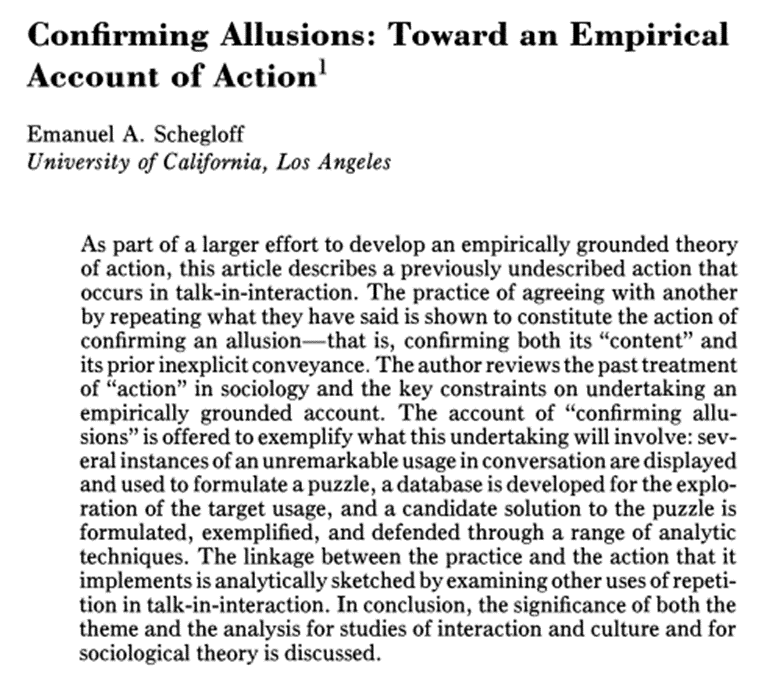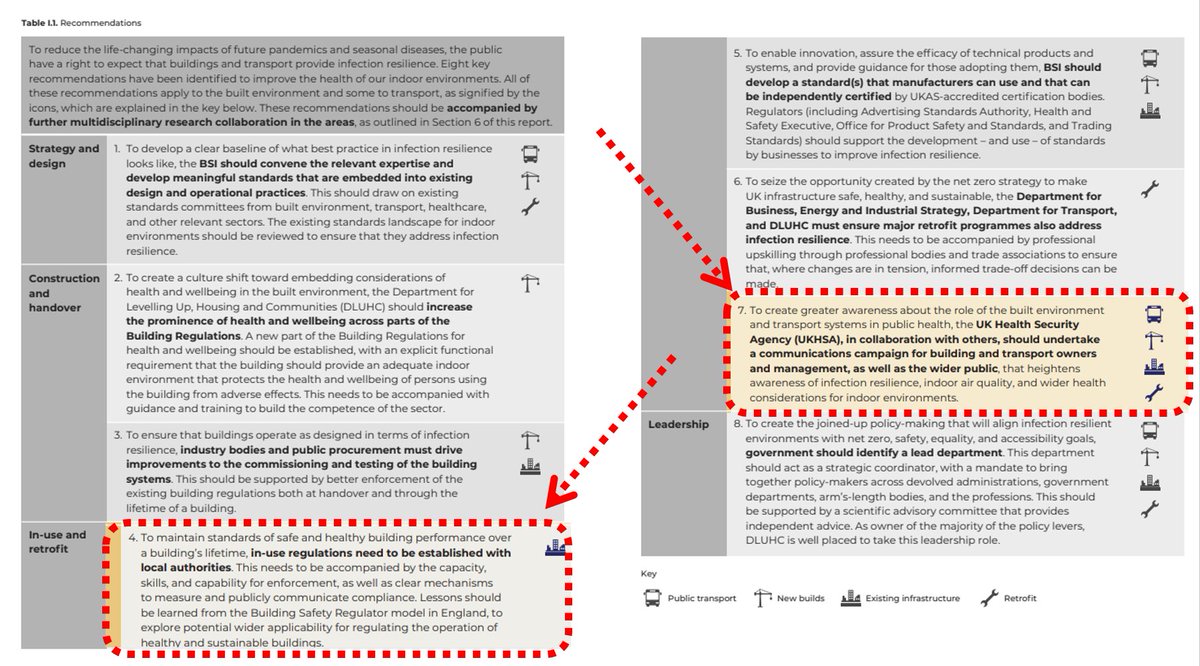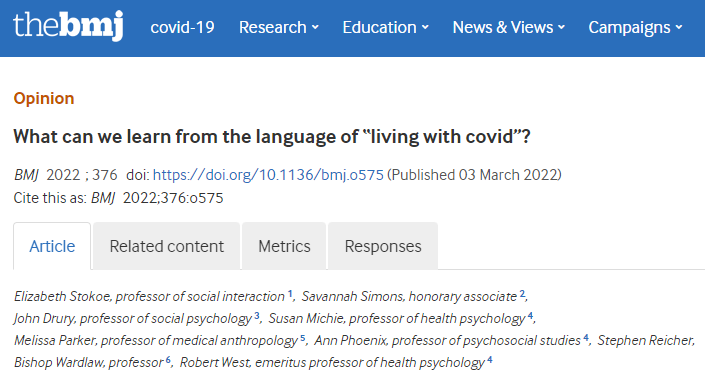What evidence is there that “using these 8 common phrases” will “ruin your credibility”?
Answer: Not much.
Why do we create and perpetuate #communication myths? Communication is important, and we don't see enough of how it works “in the wild.”
🧵Thread 1/12
Answer: Not much.
Why do we create and perpetuate #communication myths? Communication is important, and we don't see enough of how it works “in the wild.”
🧵Thread 1/12

The thread is informed by research in conversation analysis #EMCA
There are other research methods for investigating communication, but not all look at actual humans producing, for instance, those “8 common phrases” in social interaction.
That’s what this thread will do. 2/12



There are other research methods for investigating communication, but not all look at actual humans producing, for instance, those “8 common phrases” in social interaction.
That’s what this thread will do. 2/12




The thread gives examples of the “8 common phrases” being used.
As @DerekEdwards23 says, if data-free assertions (advice, theories, models) don’t account for actual interaction, there’s a problem.
Judge for yourself whether the phrases undermine speaker credibility. 3/12
As @DerekEdwards23 says, if data-free assertions (advice, theories, models) don’t account for actual interaction, there’s a problem.
Judge for yourself whether the phrases undermine speaker credibility. 3/12
Phrase 1: "To be honest"
It’s not about 'truth'.
As @DerekEdwards023 & @alefasulo show, it is often about handling “dispreferred” turns (i.e., they appear when we turn down invitations, disagree, criticize, etc.), or to assert sincerity and/or independence. 4/12


It’s not about 'truth'.
As @DerekEdwards023 & @alefasulo show, it is often about handling “dispreferred” turns (i.e., they appear when we turn down invitations, disagree, criticize, etc.), or to assert sincerity and/or independence. 4/12



Phrase 2: "In my opinion"
The invented examples vary, and are stripped from context (i.e., other turns at talk before and after).
In my data, the phrase is used to claim independence from someone else’s point of view in situations involving a problem. 5/12

The invented examples vary, and are stripped from context (i.e., other turns at talk before and after).
In my data, the phrase is used to claim independence from someone else’s point of view in situations involving a problem. 5/12


Phrase 3: "You may already know this, but"
There’s *lots* of research on how people handle their own and other people’s 'knowledge'.
We typically design our talk in a way that shows we're fitting it to what (we think) others already know (and don't always get it right). 6/12



There’s *lots* of research on how people handle their own and other people’s 'knowledge'.
We typically design our talk in a way that shows we're fitting it to what (we think) others already know (and don't always get it right). 6/12




Phrase 4: "I'm not sure"
This claim is daft.
The “I’m not sures” in the conversations attached should not be ‘eliminated’ (!) since they’re all doing specific things - from reassurance to showing care in mobilizing advice or help. 7/12

This claim is daft.
The “I’m not sures” in the conversations attached should not be ‘eliminated’ (!) since they’re all doing specific things - from reassurance to showing care in mobilizing advice or help. 7/12


Phrase 5: "I could be wrong"
This is another simple generalization doing damage to (and being unlikely to account for) reality, and where removing the context (that is, all the other turns at talk leading up to and following this invented case) exacerbates the problem. 8/12

This is another simple generalization doing damage to (and being unlikely to account for) reality, and where removing the context (that is, all the other turns at talk leading up to and following this invented case) exacerbates the problem. 8/12


Phrase 6: "This is probably a stupid question"
The invented case doesn’t ring true.
The phrase is a preface; a disclaimer; very common. It does things like account for asking, or handle a situation where the other party hasn’t (but should) have made something clear, etc. 9/12

The invented case doesn’t ring true.
The phrase is a preface; a disclaimer; very common. It does things like account for asking, or handle a situation where the other party hasn’t (but should) have made something clear, etc. 9/12


Phrase 7: "Just a thought"
Again, the example is odd, and too simplistic to generalize from.
In real data, Speaker A may say “just a thought” after Speaker B has resisted Speaker A’s offer, as a way of minimizing their stake in Speaker B accepting or rejecting it. 10/12

Again, the example is odd, and too simplistic to generalize from.
In real data, Speaker A may say “just a thought” after Speaker B has resisted Speaker A’s offer, as a way of minimizing their stake in Speaker B accepting or rejecting it. 10/12


11. Phrase 8: "If you don't mind"
I’m not sure where ‘edgy’ comes from, but there’s some evidence for using the phrase to attend to the potentially delicate nature of a request, as in the examples attached. 11/12

I’m not sure where ‘edgy’ comes from, but there’s some evidence for using the phrase to attend to the potentially delicate nature of a request, as in the examples attached. 11/12


In sum:
Invented (& ‘remembered’) decontextualized examples are not the same as actual interaction. This is a problem for communication guidance and assessment.
If a recommendation does not match the empirical reality of talk, it’s probably not a good recommendation. 🧵12/12.


Invented (& ‘remembered’) decontextualized examples are not the same as actual interaction. This is a problem for communication guidance and assessment.
If a recommendation does not match the empirical reality of talk, it’s probably not a good recommendation. 🧵12/12.



• • •
Missing some Tweet in this thread? You can try to
force a refresh



















